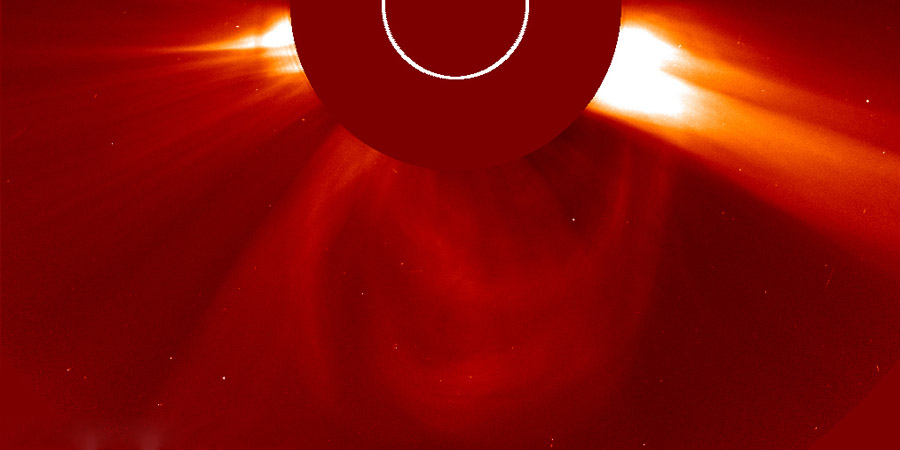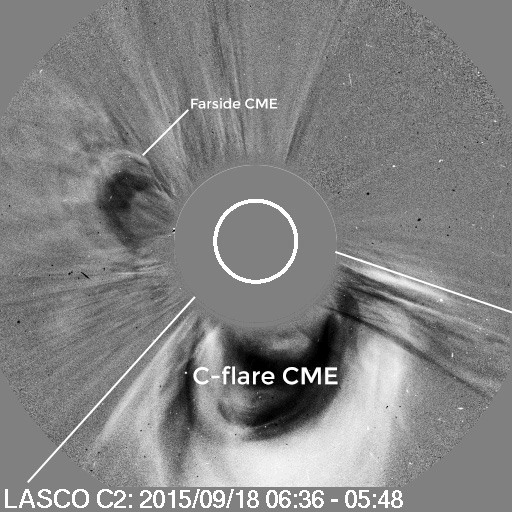Coronal mass ejection heading for Earth?
Saturday, 19 September 2015 15:22 UTC

A long duration C-class solar flare from sunspot region 2415 that took place yesterday morning and launched a coronal mass ejection.
We expected this coronal mass ejection to head south of Earth with at most a minor glancing blow as LASCO coronagraph imagery clearly shows most of the ejecta heading well south of the ecliptic plane.
Image: The coronal mass ejection as seen by NASA/ESA SOHO.
However, we were surprised by the EPAM readings this morning. The rising trend of the low energy protons as shown on EPAM suggests that there might be more ejecta on the Sun-Earth line then we first expected. It is really hard to tell what kind of geomagnetic conditions to expect if we do see an impact here at Earth from this coronal mass ejection but the steady rise on EPAM could very well be a positive sign.
We estimated that the speed of this coronal mass ejection has to be around 500km/s as it left the Sun which means any glancing blow could arrive during the second half of Monday, 21 September.
Thank you for reading this article! Did you have any trouble with the technical terms used in this article? Our help section is the place to be where you can find in-depth articles, a FAQ and a list with common abbreviations. Still puzzled? Just post on our forum where we will help you the best we can!
Latest news
Latest forum messages
Support SpaceWeatherLive.com!
A lot of people come to SpaceWeatherLive to follow the Sun's activity or if there is aurora to be seen, but with more traffic comes higher server costs. Consider a donation if you enjoy SpaceWeatherLive so we can keep the website online!

Space weather facts
| Last X-flare | 2024/03/28 | X1.1 |
| Last M-flare | 2024/04/18 | M1.2 |
| Last geomagnetic storm | 2024/04/16 | Kp5 (G1) |
| Spotless days | |
|---|---|
| Last spotless day | 2022/06/08 |
| Monthly mean Sunspot Number | |
|---|---|
| March 2024 | 104.9 -19.8 |



